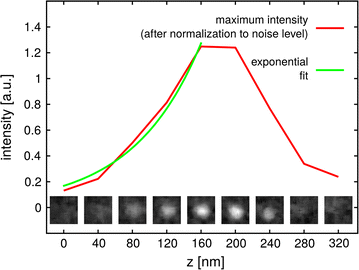Quantification of silver nanoparticle uptake and distribution within individual human macrophages by FIB/SEM slice and view
- PMID: 28327151
- PMCID: PMC5359962
- DOI: 10.1186/s12951-017-0255-8
Quantification of silver nanoparticle uptake and distribution within individual human macrophages by FIB/SEM slice and view
Abstract
Background: Quantification of nanoparticle (NP) uptake in cells or tissues is very important for safety assessment. Often, electron microscopy based approaches are used for this purpose, which allow imaging at very high resolution. However, precise quantification of NP numbers in cells and tissues remains challenging. The aim of this study was to present a novel approach, that combines precise quantification of NPs in individual cells together with high resolution imaging of their intracellular distribution based on focused ion beam/ scanning electron microscopy (FIB/SEM) slice and view approaches.
Results: We quantified cellular uptake of 75 nm diameter citrate stabilized silver NPs (Ag 75 Cit) into an individual human macrophage derived from monocytic THP-1 cells using a FIB/SEM slice and view approach. Cells were treated with 10 μg/ml for 24 h. We investigated a single cell and found in total 3138 ± 722 silver NPs inside this cell. Most of the silver NPs were located in large agglomerates, only a few were found in clusters of fewer than five NPs. Furthermore, we cross-checked our results by using inductively coupled plasma mass spectrometry and could confirm the FIB/SEM results.
Conclusions: Our approach based on FIB/SEM slice and view is currently the only one that allows the quantification of the absolute dose of silver NPs in individual cells and at the same time to assess their intracellular distribution at high resolution. We therefore propose to use FIB/SEM slice and view to systematically analyse the cellular uptake of various NPs as a function of size, concentration and incubation time.
Keywords: Absolute dose; Cellular internalization; FIB/SEM slice and view; Macrophage; Nanoparticles.
Figures






References
MeSH terms
Substances
LinkOut - more resources
Full Text Sources
Other Literature Sources
Miscellaneous

